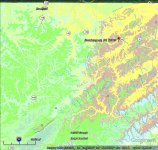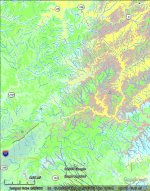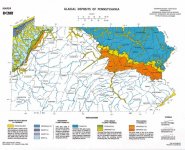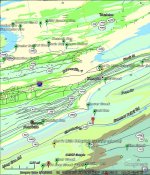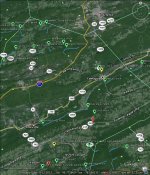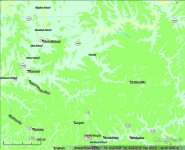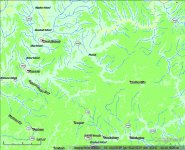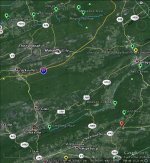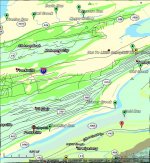k-bob
Well-known member
- Joined
- Jul 29, 2009
- Messages
- 2,371
Fun images, area near western border of Potter. Bedrock colors are Pottsville = lime green; Huntley Mtn = redbrown; Catskill = lemon yellow. Blue squiggles are class As. Geology isn't the only thing involved, but looks like more class As when streams start in Huntley and Catskill in Potter, versus when they start in Pottsville further west.
Pottsville is low buffering bedrock that may have relatively high aluminum levels. pfbc: "Kocovsky and Carline (2006) noted that streams with underlying Pottsville sandstone geology were the most problematic in retaining wild trout populations. This was due to the lack of buffering capacity from previous acidic episodes, the leaching of acidic materials, and the leaching of aluminum during precipitation events."
Pottsville is low buffering bedrock that may have relatively high aluminum levels. pfbc: "Kocovsky and Carline (2006) noted that streams with underlying Pottsville sandstone geology were the most problematic in retaining wild trout populations. This was due to the lack of buffering capacity from previous acidic episodes, the leaching of acidic materials, and the leaching of aluminum during precipitation events."

